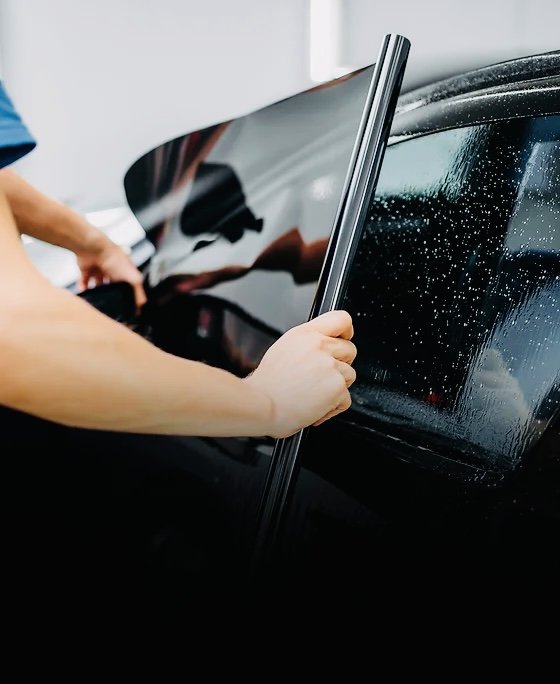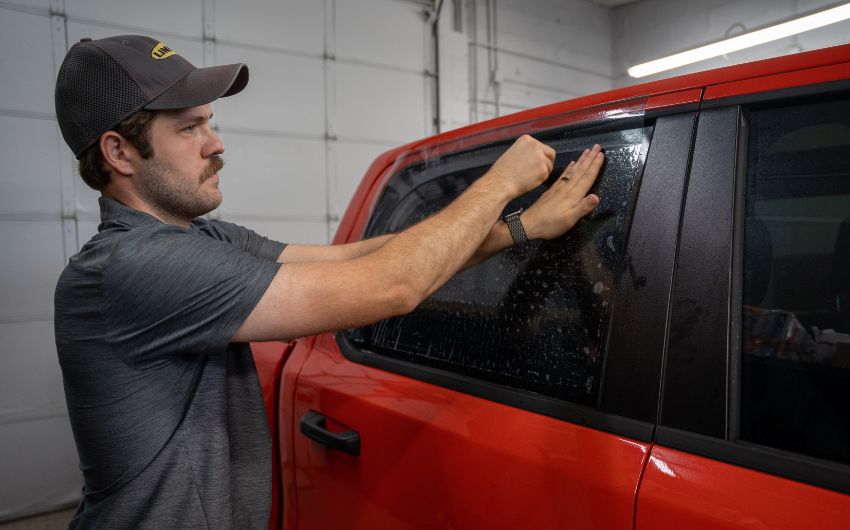Car Window Tinting: What to Anticipate Throughout the Setup Refine
Car Window Tinting: What to Anticipate Throughout the Setup Refine
Blog Article
Home Window Tinting Rules and Guidelines: What You Need to Know Before Tinting Your Automobile
Prior to waging window tinting for your automobile, it is necessary to familiarize yourself with the diverse laws and guidelines that regulate this practice across various states. These policies determine the acceptable levels of tint darkness, often measured by visible light transmission (VLT) portions, and include specific specifications for front windshields intended at guaranteeing roadway security. In addition, particular territories may supply medical exemptions for people with certifying conditions. Comprehending these complexities can conserve you from prospective legal ramifications, yet what are the specific policies in your state?
Review of Home Window Tinting Rules
Home window tinting regulations are regularly based on variant across various territories, mirroring regional regulations and safety and security factors to consider. These laws dictate the allowable degrees of color darkness and reflectiveness on automobile home windows, guaranteeing that motorists maintain adequate presence while additionally shielding versus unsafe UV rays and heat.
Many regulations identify home window tinting based upon the Visible Light Transmission (VLT) percent, which shows the quantity of light that can go through the window. Typically, reduced VLT portions signify darker colors. Regulations typically differentiate between the front, side, and rear home windows, with stricter limitations put on the front windscreen to improve security for both the motorist and other roadway users.
Compliance with window tinting guidelines is crucial, as violations can result in penalties, required elimination of the color, and possible rises in insurance costs. It is necessary for automobile owners to acquaint themselves with neighborhood laws before proceeding with window tinting installments.
State-by-State Tint Rules
Comprehending the certain window tinting laws in each state is important for lorry proprietors looking for to adhere to the law. Each state in the united state has established its very own collection of policies regulating home window tinting, which can differ substantially. These regulations frequently dictate the allowed levels of tint darkness, the sorts of home windows that can be tinted, and any medical exceptions that may apply.
For example, states like California have rigid restrictions on color darkness for front home windows, while others, such as New Mexico, may enable darker colors. In addition, certain states mandate details visibility percents for various home windows, including the windscreen, front side windows, and back windows. It is essential for automobile proprietors to acquaint themselves with their state's laws to avoid possible fines or penalties.
Additionally, some states may need a certification sticker label to be positioned on tinted windows, showing compliance with state regulations. Failing to adhere to these policies not just takes the chance of legal repercussions but can likewise influence safety and visibility while driving. For that reason, automobile proprietors should carry out complete research or get in touch with local authorities to make sure complete understanding and compliance with state-by-state color guidelines.
Allowed Tint Degrees and Kinds
Lots of vehicle owners might be amazed to discover that allowed color degrees and types differ extensively throughout various states. Each state has established its very own guidelines concerning the acceptable darkness and reflectivity of window color, frequently gauged by Visible Light Transmission (VLT) percentages. VLT describes the amount of light that can pass with the colored home windows; hence, a lower percent shows a darker color.

Additionally, the kinds of tint products permitted can differ, with some states restricting mirror-like or metallic coatings. It is necessary for automobile owners to familiarize themselves with their state's specific laws to make sure conformity. Non-compliance can result in penalties, compulsory removal of the tint, or various other legal repercussions, making it imperative to recognize these guidelines before waging installment.
Medical Exemptions for Tinting
While not all states offer allocations for clinical exemptions concerning window tinting, those that do identify the necessity for particular people to improve visibility and comfort as a result of medical problems. Various medical conditions, such as lupus, skin cancer, and certain eye disorders, can render people particularly sensitive to sunlight. Consequently, these individuals may call for darker colors to protect themselves from damaging UV rays and glow.

It is essential to keep in mind that even with a clinical exception, there might still be constraints on the degree of tint enabled. Compliance with state legislations makes sure that people are both secured and within legal limits. Those taking into consideration medical exemptions must contact their local Division of Motor Vehicles or equal authority to comprehend the needs and procedures essential to obtain an exception efficiently.
Charges for Non-Compliance
Falling short to abide by window tinting laws can lead to significant fines, which differ by state. Police are empowered to issue citations for cars that do not stick to the specified tinting regulations. These charges normally include fines, which can vary from modest total up to several hundred bucks, relying browse around these guys on the extent of the infraction and the state in question.
In some territories, repeated offenses might lead to intensifying penalties or extra charges, such as required court appearances. In addition, non-compliance might demand the elimination of illegal tinting, commonly at the proprietor's expenditure. In extreme situations, habitual transgressors might deal with suspension of their automobile enrollment until conformity is achieved.
Furthermore, insurance policy ramifications might develop from getting several citations for window tint blog here violations. Insurance firms may check out such infractions as an indication of riskier actions, possibly leading to boosted premiums or trouble in insurance coverage.
To prevent these fines, it is essential for vehicle proprietors to familiarize themselves with their local window tinting regulations and make certain that their car complies (Window Tinting). This aggressive method not only prevents lawful ramifications but also promotes roadway safety and security
Conclusion

Many policies categorize window tinting based on the Visible Light Transmission (VLT) portion, which suggests the quantity of light that can pass through the window. Compliance with window tinting regulations is vital, as violations can result in fines, required elimination of the tint, and prospective boosts in insurance coverage premiums.Recognizing the particular home window tinting guidelines in each state is crucial for lorry proprietors seeking to abide with the regulation. These guidelines typically determine the allowable degrees of tint darkness, the kinds of windows that can be tinted, and any type of clinical exemptions that may apply.
For circumstances, states click for info like The golden state have strict constraints on tint darkness for front home windows, while others, such as New Mexico, might allow darker tints.
Report this page